CandID
IMMY's Real-Time PCR test for the detection of clinically relevant Candida species allows for more timely and accurate diagnosis than traditional culture methodology.
Over the last two decades, Candida has emerged as one of the most important pathogens causing bloodstream infections in both adults and children worldwide, representing up to 9% of all nosocomial bloodstream infections. Candida bloodstream infection (BSI), also called candidemia, is the most common form of Invasive Candidiasis (IC).

Specimen Types & Registrations
- CE: Serum & Plasma
Product Reference
- OLM2007
Targets
- C. albicans, C. glabrata, C. parapsilosis, C. tropicalis, C. dubliniensis, C. krusei
- Internal Extraction Control (IEC)
Performance Characteristics
- Sensitive to <1 Candida genome copy
- Proven efficacy in the diagnosis of Candida BSI
Detect Early. Treat Fast. Save Lives.
Features & Benefits
Results Within 45 Minutes
Culture-Independent
Species Differentiation
- DOCUMENTS
- STUDIES
- ORDERING INFORMATION
CandID - Candida species Real-Time PCR
Ref: OLM2007
CandID - Candida species Real-Time PCR |
Ref: OLM2007 |
Discover the Life-Saving Potential
Reach out to learn how IMMY’s Candida species PCR can improve patient health with fast and accurate results.





